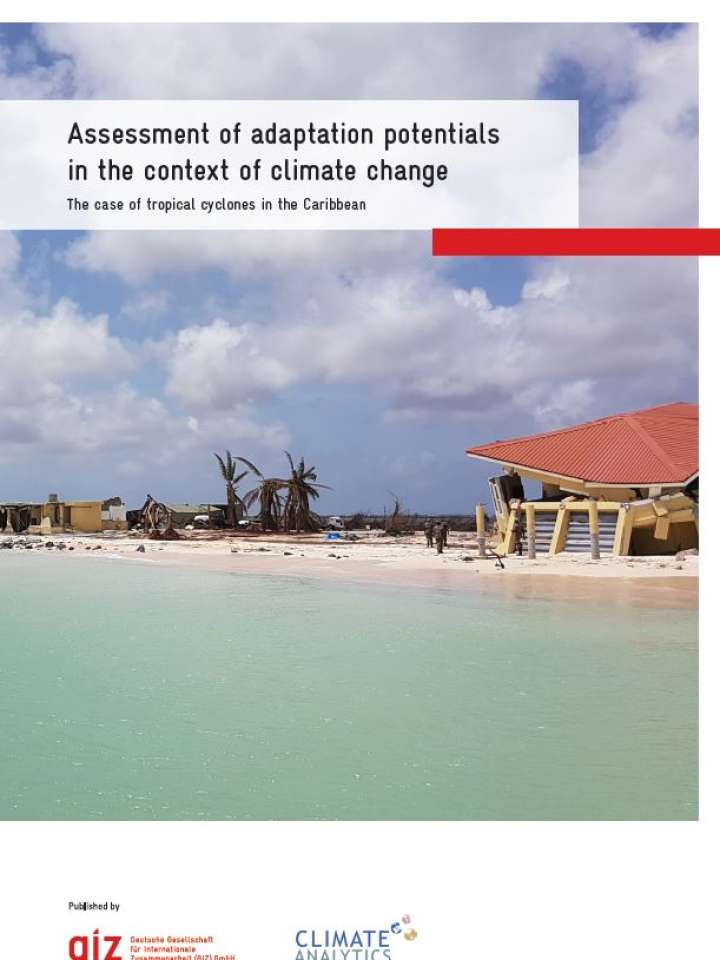Assessment of adaptation potentials in the context of climate change: the case of tropical cyclones in the Caribbean
This report looks into the application of CLIMADA (CLIMate ADAptation), a natural catastrophe model that calculates climate risk and potential of adaptation in the Caribbean. The study marks a starting point to determine economic losses and damages as well as adaptation measures for the region which is commonly exposed to natural disasters. This approach could support decision-making processes by countries, allow for the analysis of adaptation potentials and support the selection processes of an effective mix of measures for climate risk management. Since an adaptation gap may still be incurred for countries, leading to losses and damages, we recommend that this approach be applied and further developed.
Key findings of this report include:
- There is a substantial increase in the risk posed by tropical cyclones in 2100 at 3°C of warming when compared to warming of 1.5°C – the temperature goal identified by the Paris Agreement.
- Expected accumulated damages from tropical cyclones could increase by up to 5% in 2030 and 150% in 2100 relative to 2020, due to increased cyclone intensity as a result of climate change.
- This risk is reduced if global climate action limits warming to below 1.5°C above pre-industrial levels by 2100, but still represents a sizeable increase in projected damages.
- For some islands, a mix of adaptation measures, including grey infrastructure, nature-based solutions, improved infrastructure, and risk insurance, have the potential to avert economic damages from tropical cyclones.
- The preservation of mangroves and corals, classified as nature-based solutions, are found to provide cost-efficient coastal protection measures.
Explore further
